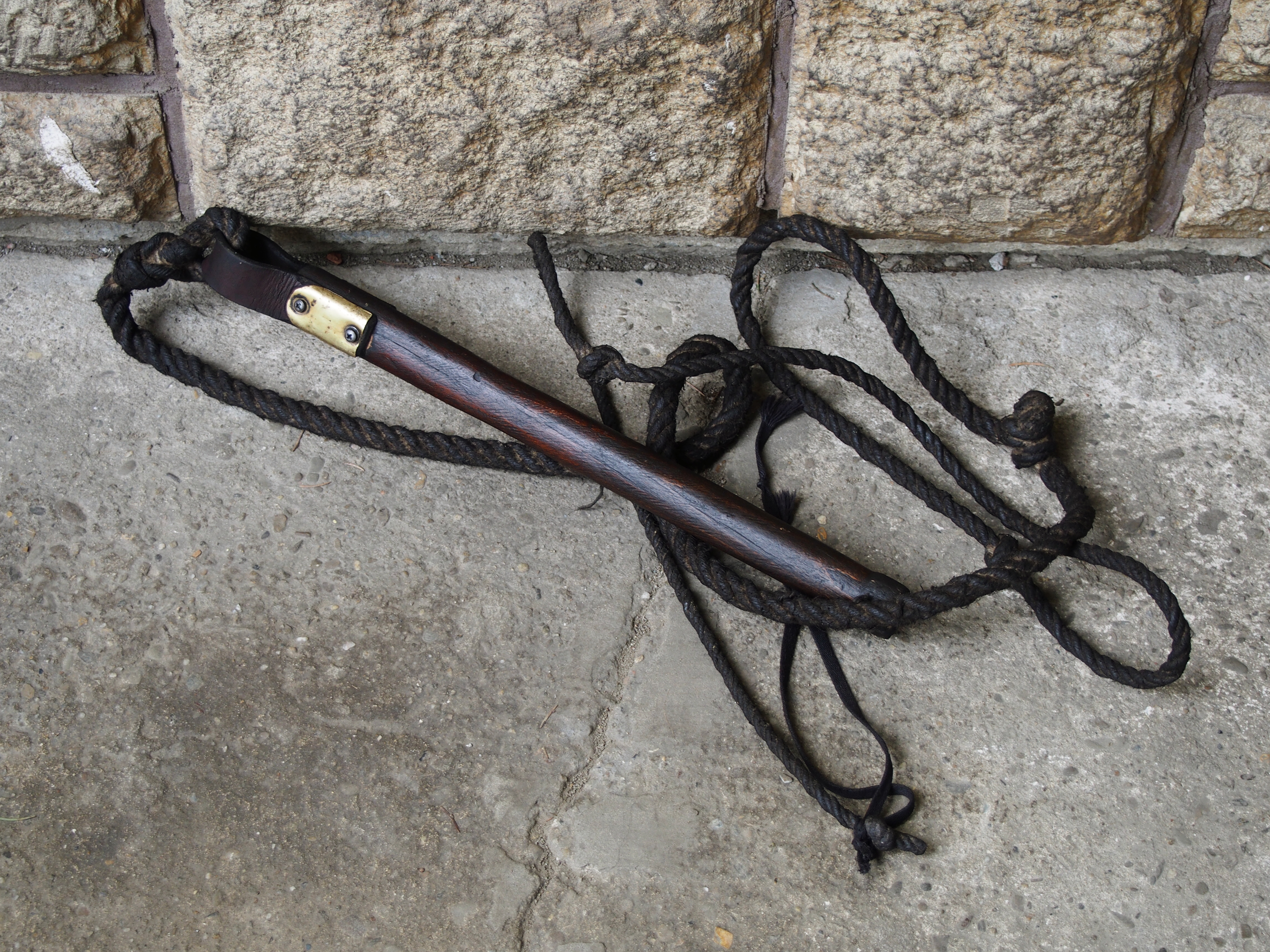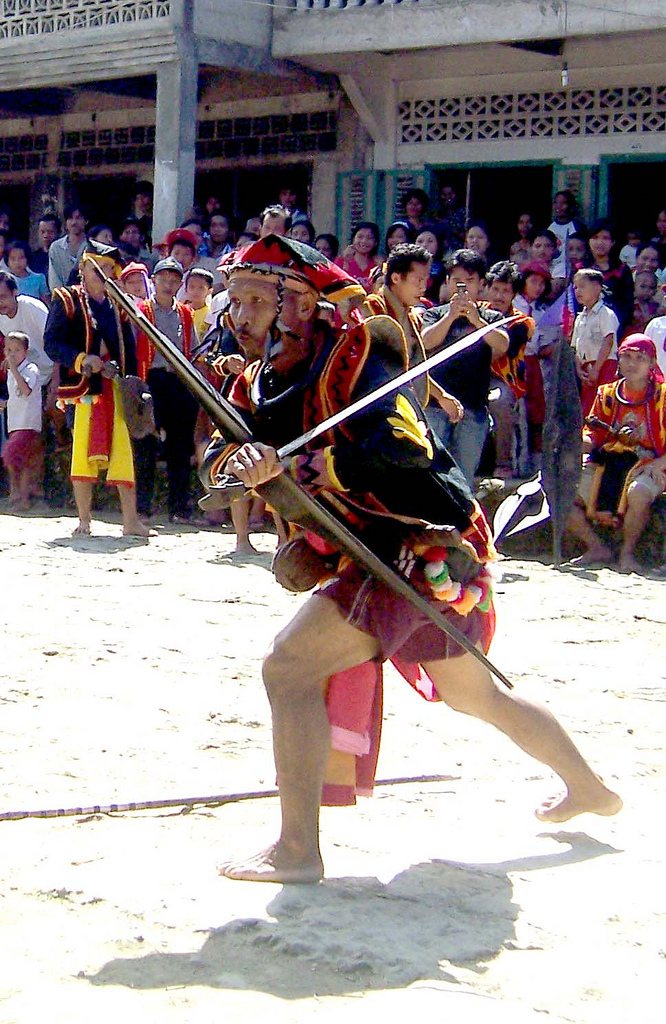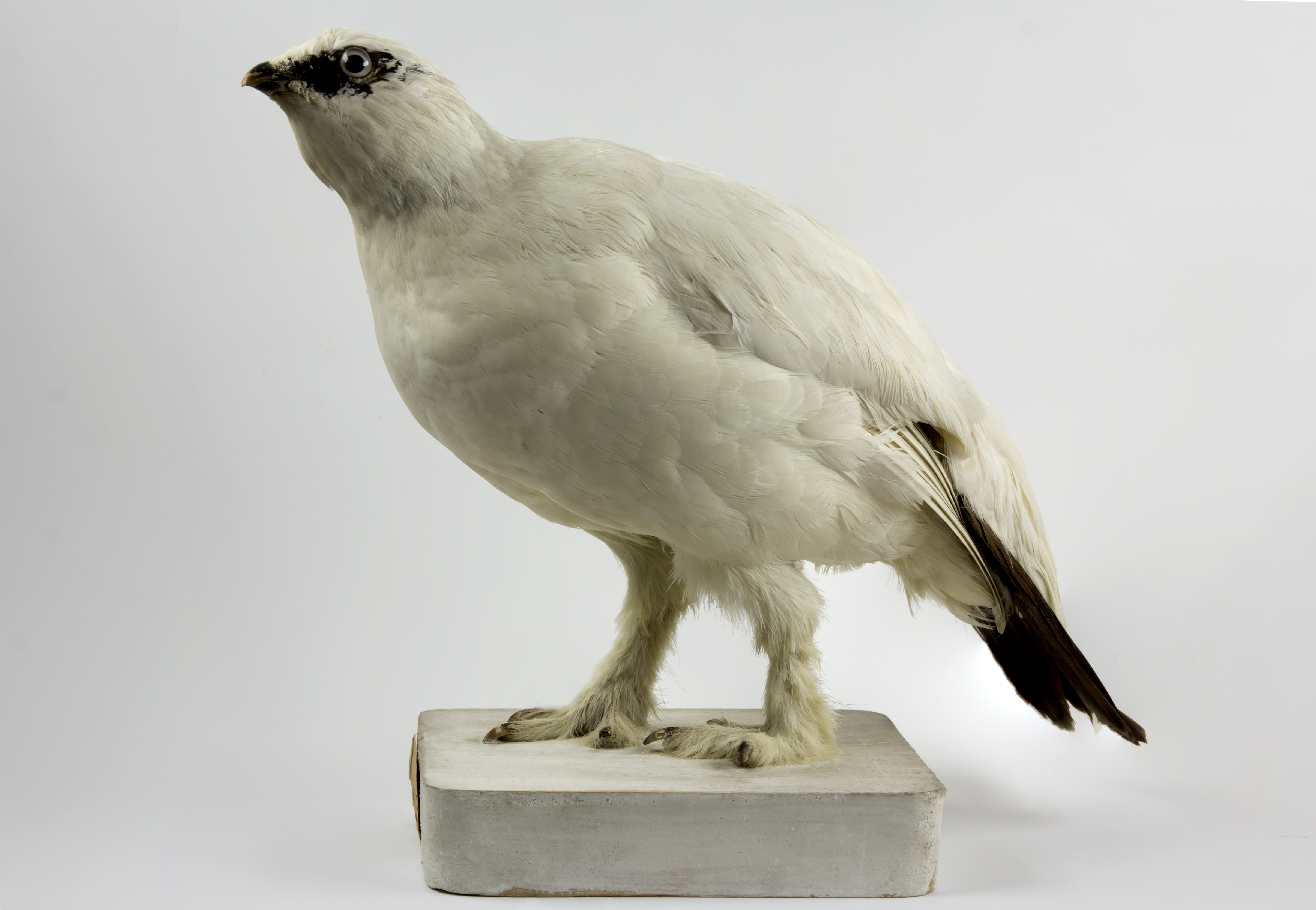|
Bull Whip
A bullwhip is a single-tailed whip, usually made of braided leather or nylon, designed as a tool for working with livestock or competition. Bullwhips are pastoral tools, traditionally used to control livestock in open country. A bullwhip's length, flexibility, and tapered design allows it to be thrown in such a way that, toward the end of the throw, part of the whip exceeds the speed of sound—thereby creating a small sonic boom. The bullwhip was rarely, if ever, used to strike cattle, as this could inflict damage to the animal. The bullwhip should not be confused with the stockwhip, an Australian whip also used to control livestock but having a somewhat different structure. History The origins of the bullwhip are also a matter for debate and, given the perishable nature of leather, are likely to remain so. Difficulties in tracing its development also arise from regional and national variations in nomenclature. There are claims that it was developed in South America where, l ... [...More Info...] [...Related Items...] OR: [Wikipedia] [Google] [Baidu] |
Whip (implement)
A whip is a tool or weapon designed to strike humans or other animals to exert control through pain compliance or fear of pain. They can also be used without inflicting pain, for audiovisual cues, such as in equestrianism. They are generally either a firm stick designed for direct contact, or a flexible line requiring a specialized swing. The former is easier and more precise, the latter offers longer reach and greater force. A hunting whip combines a firm stick (the stock or handle) with a flexible line (the lash or thong). Whips such as the "cat o' nine tails" and knout are specifically developed for flagellation as a means of inflicting corporal punishment or torture on human targets. Certain religious practices and BDSM activities involve the self-use of whips or the use of whips between consenting partners. Misuse on non-humans may be considered animal cruelty, and misuse on humans may be viewed as assault. Use Whips are generally used on animals to provide directional g ... [...More Info...] [...Related Items...] OR: [Wikipedia] [Google] [Baidu] |
Paracord
Parachute cord (also paracord or 550 cord when referring to type-III paracord) is a lightweight nylon kernmantle rope originally used in the suspension lines of parachutes. This cord is now used as a general purpose utility cord. This versatile cord was used by astronauts during the 82nd Space Shuttle mission to repair the Hubble Space Telescope. The braided sheath is usually made up of 32 interwoven strands, giving it a relatively smooth texture. The all-nylon construction makes paracord somewhat elastic. Current technical standards for the manufacture of cord for use in parachutes are published by the Parachute Industry Association. The now inactivated US military standard MIL-C-5040H required the material to be nylon. Similar styles of cord are manufactured with other materials such as polyester. Usage Historically associated with airborne units and divisions, paracord is not used as cordage for modern "square" parachutes. However, it continues to be used by many militar ... [...More Info...] [...Related Items...] OR: [Wikipedia] [Google] [Baidu] |
Whips
A whip is a tool or weapon designed to strike humans or other animals to exert control through pain compliance or fear of pain. They can also be used without inflicting pain, for audiovisual cues, such as in equestrianism. They are generally either a firm stick designed for direct contact, or a flexible line requiring a specialized swing. The former is easier and more precise, the latter offers longer reach and greater force. A hunting whip combines a firm stick (the stock or handle) with a flexible line (the lash or thong). Whips such as the "cat o' nine tails" and knout are specifically developed for flagellation as a means of inflicting corporal punishment or torture on human targets. Certain religious practices and BDSM activities involve the self-use of whips or the use of whips between consenting partners. Misuse on non-humans may be considered animal cruelty, and misuse on humans may be viewed as assault. Use Whips are generally used on animals to provide directional g ... [...More Info...] [...Related Items...] OR: [Wikipedia] [Google] [Baidu] |
Urumi
Urumi (Malayalam: ''uṟumi''; Sinhalese: ''ethunu kaduwa''; Hindi: ''āra'') is a sword with a flexible, whip-like blade, originating in modern-day Kerala in the Indian subcontinent. It is thought to have existed from as early as the Sangam period. It is treated as a steel whip and therefore requires prior knowledge of that weapon as well as the sword. For this reason, the urumi is always taught last in Indian martial arts such as Kalaripayattu. The word ''urumi'' is used to refer to the weapon in Malayalam. In Kerala, it is also called ''chuttuval'', from the Malayalam words for "coiling," or "spinning,"(''chuttu'') and "sword" (''val''). Alternatively, Tamil names for the weapon are ''surul katti'' (coiling knife), ''surul val'' (coiling sword) and ''surul pattakatti'' (coiling machete). Anatomy The urumi hilt is constructed from iron or brass and is identical to that of the ''talwar'', complete with a crossguard and frequently a slender knucklebow. The typical handle is te ... [...More Info...] [...Related Items...] OR: [Wikipedia] [Google] [Baidu] |
Indonesian Martial Arts
Indonesian martial arts includes a variety of fighting systems native to or developed in the archipelago of Indonesia, both the age-old traditional arts, and the more recently developed hybrid combatives. In the Indonesian language the term ''bela-diri'' (lit. self-defense) is used to mean martial art, and in essence the Indonesian fighting arts are meant as one's defence against perceived threat and assault. Other than physical training, they often include spiritual aspects to cultivate inner strength, inner peace and higher psychological ends. Today, Indonesian fighting styles are synonymous with pencak silat, a term coined for the martial arts of the Indonesian archipelago. Nevertheless, a number of fighting arts in Indonesia are not included within the category of silat. Western misconception links silat with "jungle tribes" but in actuality, pencak silat was neither created nor traditionally practised by Indonesia's tribal inhabitants, many of whom have unique martial arts ... [...More Info...] [...Related Items...] OR: [Wikipedia] [Google] [Baidu] |
Sjambok
The sjambok () or litupa is a heavy leather whip. It is traditionally made from an adult hippopotamus or rhinoceros hide, but is also commonly made out of plastic. A strip of the animal's hide is cut and carved into a strip long, tapering from about thick at the handle to about at the tip. This strip is then rolled until reaching a tapered-cylindrical form. The resulting whip is both flexible and durable. A plastic version was made for the apartheid era South African Police, and used for riot control. Peter Hathaway Capstick describes a sjambok as a short swordlike whip made from rhino pizzle leather that could lay a man open like a straight razor. The sjambok was heavily used by the Voortrekkers driving their oxen while migrating from the Cape of Good Hope, and remains in use by herdsmen to drive cattle. They are widely available in South Africa from informal traders to regular stores from a variety of materials, lengths and thicknesses. Use by police In South Africa, us ... [...More Info...] [...Related Items...] OR: [Wikipedia] [Google] [Baidu] |
Bullwhip Effect
The bullwhip effect is a supply chain phenomenon where orders to suppliers tend to have a larger variability than sales to buyers, which results in an amplified demand variability upstream. In part, this results in increasing swings in inventory in response to shifts in consumer demand as one moves further up the supply chain. The concept first appeared in Jay Forrester's ''Industrial Dynamics'' (1961) and thus it is also known as the Forrester effect. It has been described as “the observed propensity for material orders to be more variable than demand signals and for this variability to increase the further upstream a company is in a supply chain”. Science at Stanford University helped incorporate the concept into supply chain vernacular using a story about Volvo. Suffering a glut in green cars, sales and marketing developed a program to sell the excess inventory. While successful in generating the desired market pull, manufacturing did not know about the promotional plans. In ... [...More Info...] [...Related Items...] OR: [Wikipedia] [Google] [Baidu] |
Edmonton Journal
The ''Edmonton Journal'' is a daily newspaper in Edmonton, Alberta. It is part of the Postmedia Network. History The ''Journal'' was founded in 1903 by three local businessmen — John Macpherson, Arthur Moore and J.W. Cunningham — as a rival to Alberta's first newspaper, the 23-year-old ''Edmonton Bulletin''. Within a week, the ''Journal'' took over another newspaper, ''The Edmonton Post'', and established an editorial policy supporting the Conservative Party of Canada (historical), Conservative Party against the ''Bulletins stance for the Liberal Party of Canada, Liberal Party. In 1912, the ''Journal'' was sold to the William Southam, Southam family. It remained under Southam ownership until 1996, when it was acquired by Hollinger International. The ''Journal'' was subsequently sold to Canwest in 2000, and finally came under its current ownership, Postmedia Network Inc., in 2010. [...More Info...] [...Related Items...] OR: [Wikipedia] [Google] [Baidu] |
Wolf
The wolf (''Canis lupus''; : wolves), also known as the gray wolf or grey wolf, is a large canine native to Eurasia and North America. More than thirty subspecies of ''Canis lupus'' have been recognized, and gray wolves, as popularly understood, comprise wild subspecies. The wolf is the largest extant member of the family Canidae. It is also distinguished from other ''Canis'' species by its less pointed ears and muzzle, as well as a shorter torso and a longer tail. The wolf is nonetheless related closely enough to smaller ''Canis'' species, such as the coyote and the golden jackal, to produce fertile hybrids with them. The banded fur of a wolf is usually mottled white, brown, gray, and black, although subspecies in the arctic region may be nearly all white. Of all members of the genus ''Canis'', the wolf is most specialized for cooperative game hunting as demonstrated by its physical adaptations to tackling large prey, its more social nature, and its highly advanc ... [...More Info...] [...Related Items...] OR: [Wikipedia] [Google] [Baidu] |
Reindeer
Reindeer (in North American English, known as caribou if wild and ''reindeer'' if domesticated) are deer in the genus ''Rangifer''. For the last few decades, reindeer were assigned to one species, ''Rangifer tarandus'', with about 10 subspecies. A 2022 revision of the genus elevated five of the subspecies to species (see Taxonomy below). They have a circumpolar distribution and are native to the Arctic, sub-Arctic, tundra, boreal forest, and mountainous regions of northern Europe, Siberia, and North America. Reindeer occur in both migratory and sedentary populations, and their herd sizes vary greatly in different regions. The tundra subspecies are adapted for extreme cold, and some are adapted for long-distance migration. Reindeer vary greatly in size and color from the smallest species, the Svalbard reindeer (''R. t. platyrhynchus''), to the largest subspecies, Osborn's caribou (''R. t. osborni''). Although reindeer are quite numerous, some species and subspecies are in d ... [...More Info...] [...Related Items...] OR: [Wikipedia] [Google] [Baidu] |
Rock Ptarmigan
The rock ptarmigan (''Lagopus muta'') is a medium-sized game bird in the grouse family. It is known simply as the ptarmigan in the UK. It is the official bird for the Canadian territory of Nunavut, where it is known as the ''aqiggiq'' (ᐊᕿᒡᒋᖅ), and the official game bird for the province of Newfoundland and Labrador. In Japan, it is known as the ''raichō'' (雷鳥), which means "thunder bird". It is the official bird of Gifu, Nagano, and Toyama Prefectures and is a protected species nationwide. Unlike many arctic bird species, ptarmigan do not gain substantial mass to hibernate over winter. Etymology The ptarmigan's genus name, ''Lagopus'', is derived from Ancient Greek ''lagos'' (λαγώς ''lagṓs''), meaning "hare", + ''pous'' (πούς ''poús''), "foot", in reference to the bird's feathered legs. The species name, ''muta'', comes from New Latin and means "mute", referring to the simple croaking song of the male. It was for a long time misspelt ''mutus'', in the ... [...More Info...] [...Related Items...] OR: [Wikipedia] [Google] [Baidu] |
Inuit
Inuit (; iu, ᐃᓄᐃᑦ 'the people', singular: Inuk, , dual: Inuuk, ) are a group of culturally similar indigenous peoples inhabiting the Arctic and subarctic regions of Greenland, Labrador, Quebec, Nunavut, the Northwest Territories, and Alaska. Inuit languages are part of the Eskimo–Aleut languages, also known as Inuit-Yupik-Unangan, and also as Eskaleut. Inuit Sign Language is a critically endangered language isolate used in Nunavut. Inuit live throughout most of Northern Canada in the territory of Nunavut, Nunavik in the northern third of Quebec, Nunatsiavut and NunatuKavut in Labrador, and in various parts of the Northwest Territories, particularly around the Arctic Ocean, in the Inuvialuit Settlement Region. With the exception of NunatuKavut, these areas are known, primarily by Inuit Tapiriit Kanatami, as Inuit Nunangat. In Canada, sections 25 and 35 of the Constitution Act of 1982 classify Inuit as a distinctive group of Aboriginal Canadians wh ... [...More Info...] [...Related Items...] OR: [Wikipedia] [Google] [Baidu] |







.png)

